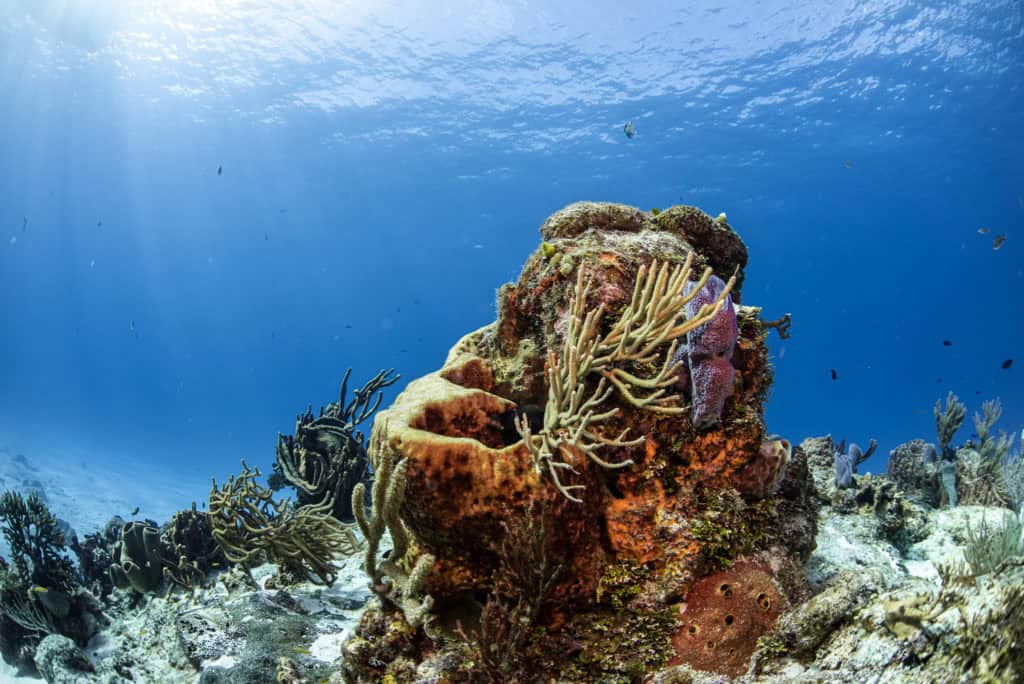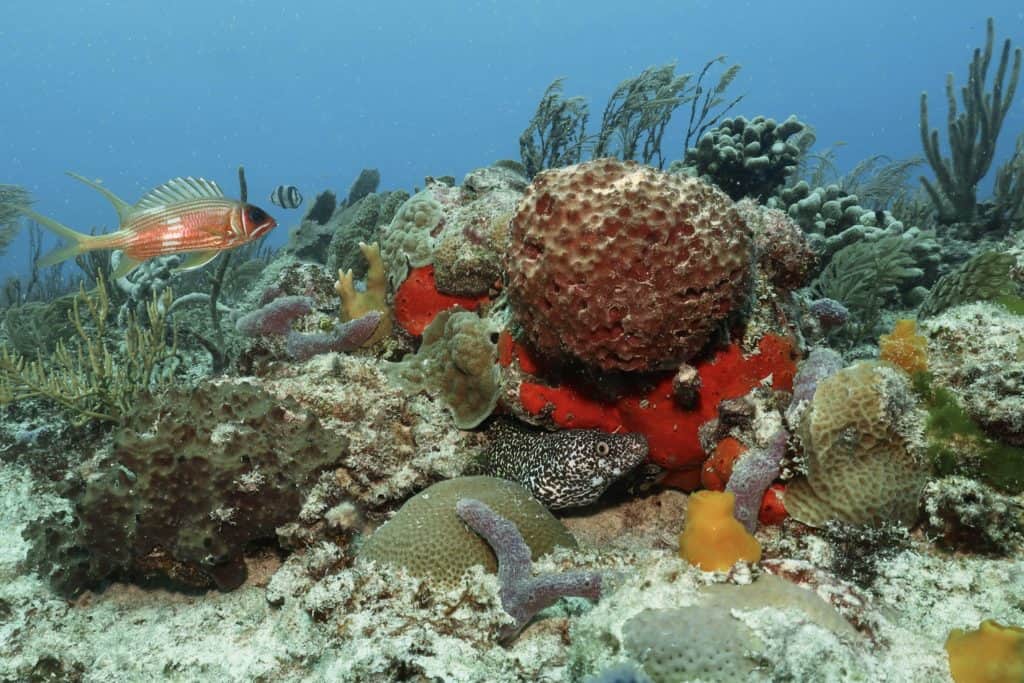We love to solve SCUBA Mysteries and today we’ll talk about one oh-so-often asked question: Are corals plants or animals?
But not only this question comes up often, when talking about “What are corals”. We will talk about what corals eat, if corals have brains, why you should not touch coral, and more! Stay tuned!

First of All: Are Corals Plants or Animals?
Corals are in fact animals, not plants.
What we perceive as corals are actually big colonies consisting of many individual polyps connected by a tissue called coenosarc. The tissue overlays the stony skeleton of each coral colony. Every individual polyp only consists of a stomach and tentacles surrounding it.
Talking tentacles, be aware! Those tentacles and outer tissue are covered with stinging cells, that are called nematocysts and are used to catch prey.
Another interesting fact is that corals live in permanent symbiosis with certain algae that are called zooxanthellae. That might be the reason why people often ask: “Are corals plants or animals?”. This algae live inside the coral’s tissues and provides energy to it, that’s produced via photosynthesis. This symbiotic relationship is the reason, why corals shine in so many different colors too!
So we can confidently say corals are animals, even though corals may appear like plants and forming stationary colonies that stay in one place might nourish that impression, they have complex life cycles and behaviors.
Now after having answered the “What are corals?”-Question, let’s move on to some more interesting facts about corals!

What Group of Animals Do Corals Belong To?
They belong to a family of animals, scientifically known as cnidarians. Corals share this biological family with jellyfish and sea anemones among others.
Corals grow in colonies that attach permanently to the ocean floor, basically taking root like a plant would do. They are often falsely claimed to be plants, due to their appearance and humans’ incapability of recognizing their “faces” or other body parts as in other animals.
Their role in the marine underwater world is essential to maintain a healthy growing reef, keep it clean, and offer protection for smaller prey animals like small fish, crabs, shrimps, sea urchins, and similar. The coral growth mostly builds the structure of the reef, growing over dozens, sometimes hundreds of years.
Many different coral species can grow next to each other in the same reef, making up colorful garden-like reefs like Jardines Reef in Playa or Yucab Reef in Cozumel!
What Do Corals Eat?
Corals are animals, we solved that now, but – what do they eat?
Contrary to plants, corals don’t make their own food. They have tiny tentacle arms that are used to catch their prey like small fish and plankton.
Thanks to the stinging cells, mostly, corals have an easy catch on their victim and their tentacles help move prey toward their mouth and stomach entry.
Another source of energy for most reef-building corals is their symbiotic relationship with certain algae inhabiting their tissue, and providing the host coral with energy in return.
So now that we know, what do corals eat and how they obtain their energy, let’s hop on to the next interesting question!
Do Corals Have A Brain?
The simple answer: no, corals do not have brains.
Many will know the so-called brain-coral, that got its name thanks to the appearance and patterns in which its polyps align.
Polyps have a very simple body structure, mainly consisting of tentacles, a mouth, a stomach/gut area, and their connecting tissue the coenosarc which covers the limestone skeleton.

Why Can’t You Touch Coral?
We already know, that we shouldn’t touch marine-life in general, if you want to learn more about this in general, read on here!
When talking about coral colonies and the many individual polyps, touching can cause mayor damage to the individual polyps and if it’s a greater impact, may even break parts of the coral colony off the limestone skeleton.
Not only the polyps and colonies can get damaged, but the human skin can be stung by the nematocysts sitting on the polyp’s tentacles and coenosarc.
Those nematocysts might be tiny but don’t underestimate the potential damage they can cause.
Instead of spines as one would expect from plants, nematocysts rather have a shooting mechanism, that activates on contact and “attacks” its victim by stinging a tiny barbed sting filled with poisonous liquid.
Threats to Corals and Coral Reefs
Today’s society has created a lot of destructive habits and industries, looking from a coral’s point of view.
Drainage discharges, landbased run-offs, ocean pollution, overfishing, chemical waste introduction in aquifers and rivers eventually ending in the ocean, destructive fishing practices like dynamiting, coral mining for construction material, and many more man-made practices do pose threats to corals and reefs all over the world and help spread fatal coral diseases like coral bleaching and soft tissue loss in corals.
Careless or untrained divers and snorkelers can damage coral heads, aquarium industries extracting coral from reefs, or oil leaks are massive threats to corals reproductive ability and also play major roles in today’s worldwide coral reef health decline.

Dive Through Cozumels Most Beautiful Coral Gardens and Reefs with DivePoint Mexico
If you’re just as captivated as us by the bright colors and different structures corals can grow, the tiny animals hiding between them or under coral-grown cavities, you found your people!
We run daily trips to the most unique and impressive reefs in Cozumel’s marine park for divers of any level, as well as half-day diving trips to the closer Playa del Carmen reefs. Nearly all of our local dive spots are coral reefs forming part of the Mesoamerican reef barrier. They are all decorated by nature with vibrant colors, different coral species, and a bunch of marine life to hang out with and encounter throughout your dives.


